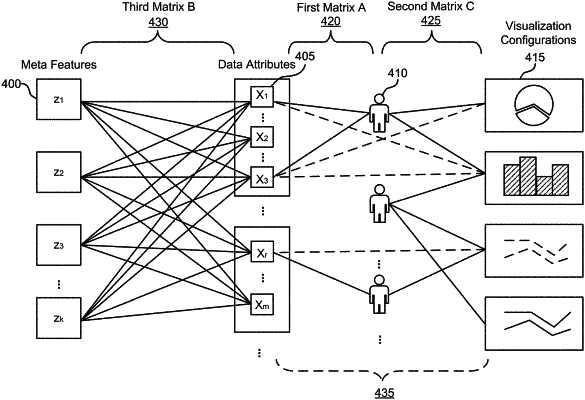| CPC G06F 16/26 (2019.01) [G06F 3/0482 (2013.01); G06F 11/302 (2013.01); G06F 11/3438 (2013.01); G06F 16/9038 (2019.01)] | 19 Claims |

|
1. A method for data visualization, comprising:
generating a user visualization interaction matrix by identifying a plurality of data attributes of a plurality of datasets and user interactions with a plurality of visualizations for the plurality of datasets;
generating a meta-feature matrix by mapping the plurality of data attributes to a plurality of meta-features;
generating a user data interaction matrix by identifying user characteristics of a user and data attributes of at least one dataset;
performing joint factorization of the user visualization interaction matrix, the meta-feature matrix, and the user data interaction matrix based on the user interactions and the mapping to obtain a plurality of joint factorization matrices comprising low-dimensional embeddings of the user characteristics of the user and the data attributes of the at least one dataset, wherein a first joint factorization matrix of the plurality of joint factorization matrices represents a first factor of the user data interaction matrix and a factor of the user visualization interaction matrix, a second joint factorization matrix of the plurality of joint factorization matrices represents a second factor of the user data interaction matrix and a factor of the meta-feature matrix;
predicting visualization preference weights corresponding to a plurality of candidate visualizations of the at least one dataset for the user using a model based on the plurality of joint factorization matrices; and
generating a personalized visualization recommendation for the at least one dataset for the user based on the predicted visualization preference weights.
|